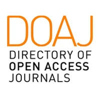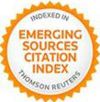Peacock Feathers and Japanese Costume Culture: Evaluations from Spectrum Images and Microscopic Observations 
Abstract
The iridescent and brilliance due to the optical anisotropy of peacock feathers attract humankind and cause a feeling of "KIREI (ethereal)". As a result of investigating the spectral characteristics of each part on the upper tail covert feather, it was confirmed that different spectral characteristics between greenish and brownish appear to depend on the lighting related to the weaving technique and design. The design of JINBAORI or OBI, which is weaved with peacock feathers, could be divided into two types: hilarious DATE, which peculiarity is the eccentric multiplex ovals shape, and austere DATE, which peculiarity is the complex optical anisotropic changes of the barbules. Though both show each <peacock-ness>, classification shows that JINBAORI tended to hilarious DATE designs in early medieval Japan. Its motivation would be inferred from the expectations for faith to originate from the peacock's symbolism. Interestingly, the austere DATE design appeared later.
Keywords
Full Text:
PDFDOI: http://dx.doi.org/10.2423/i22394303v12n2p77
References
Awano, Y. (2012). Kazaru. In Japanese society of culture of katachi (Ed), Encyclopedia to read the Japanese form & imagination (pp.413-416). Tokyo, Japan: Kosakusha
Awano, Y., & Osumi, M. (2020). Gonio-photometric spectrum analysis and texture evaluation of structural colour design: Considerations on "Peacock feather weave" by Kondaya-Genbey. In AIC2020, Proceedings of the International Colour Association Conference 2020 (pp. 99-104).
Awano, Y., & Osumi, M. (2021). Consideration on the symbolism and visual influence on costume design with natural constructional colour. In The Colour Science Association of Japan, Proceedings of the Interna-tional Colour Association Conference 2021, 45(3), 817-822.
Chaiklin, M. (2020). The Flight of the Peacock, or How Peacocks Became Japanese. In Martha Chaiklin , Philip Gooding and Gwyn Campbell(Ed), Animal Trade Histories in the Indian Ocean World (pp277-314). London, UK: Palgrave Macmillan.
Charbonnier, J-C. (Ed). (2018). Daimyo: Seigneurs de la guerre au Japon. Paris, France: ToriiLinks Editions.
Foley, V. (1992). The Jinbaori: Oneupmanship on the Battlefield. In Textile Society of America Symposium Proceedings 1992 (pp. 90-98).
Hosokawa, H. (2019). Use of birds. In Cultural magazine of people and birds. Retrieved from https://ha-ruaki.shunjusha.co.jp/posts/2537.(2022.08.29)
Iwamoto, Y. (1984). On the formation of Mahayana Buddhist scriptures: Especially with the theme of in-fluence from paganism. The Journal of Oriental Studies. The Institute of Oriental Philosophy, 23(1), 124-140.
Izumi, T. (1993). Kujaku Myoo. Kyoto National Museum bulletin, 15, 95-101.
Jackson E.C. (2006). Peacock. London: Reaktion Books Ltd. Kinoshita, S., & Yoshioka, S. (2005). Structural Colors in Nature: The Role of Regularity and Irregularity in the Structure. ChemPhysChem, 6 (8), 1442-1459. https://doi.org/10.1002/cphc.200500007 Medina, J. M., Díaz, J. A., & Vukusic, P. (2015). Classification of peacock feather reflectance using principal component analysis similarity factors from multispectral imaging data. Optics Express, 23(8), 10198-10212.
Minagawa, M. (2018). Ancient and medieval history of imported animals as seen from literature materials. In Course materials of Fukuoka City Archaeological Center Archeology Course (pp. 1-28).
Nagasaki, I. (2013). The Characteristics of Modern War Uniforms and Their Cultural Historical Signifi-cance:Focusing on the influence of foreign dyeing and weaving. Bulletin of Kyoritsu Women's University Research Institute for Cultural Studies, 19(3-3),9-30.
Ogura, S., & Ohyabu, M. (2003). Structural Color in Nature. Kogaku Japanese Journal of Optics, 33(4), 221-237.
Sonoda, S. (2013). Pancaraksa and Goddesses in Indian Esoteric Buddhism: Mahamayuri and Marici. Bulletin of The Institute of Oriental Philosophy, 167-188.
Yanagisawa, T. (1982). A Mahamayuri Painting with Exceptional Iconography. Bijutsu Kenkyu, 322, 1-15.
Article Metrics
Metrics powered by PLOS ALM
Refbacks
- There are currently no refbacks.
Copyright (c) 2023 Yumi Awano, Masayuki Osumi

This work is licensed under a Creative Commons Attribution-NonCommercial-NoDerivatives 4.0 International License.
SCIRES-IT, e-ISSN 2239-4303
Journal founded by Virginia Valzano




